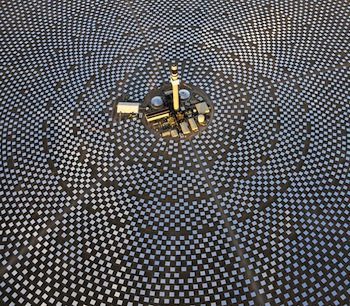The impending closure of the big Hazelwood brown coal generator in Victoria could provide the impetus for the construction of the first large-scale solar tower and storage project in Australia.
Analysts are scrambling to identify the possible impacts of the closure of Australia’s most polluting power station, and the withdrawal of more than 1500MW of capacity from the Victorian grid.

Some analysts, such as David Leitch, predict a jump in the average price of spot electricity. Others say that will depend on the future of the Portland smelter. Still others suggest that wind and solar, underpinned by the Victorian renewable energy target which will see around 5,400MW of new capacity built, will make up for lost output.
One interesting response came from South Australian energy minister Tom Koutsantonis, who told the local newspaper The Advertiser on Monday that the closure of Hazelwood would likely mean that the Pelican Point gas plant near Adelaide would operate as a baseload generator again.
“If Engie closes Hazelwood, market forces will compel them to turn Pelican Point on all the time. The positive outcome for us is we’ll get 500 megawatts of baseload generation here in SA,” he said.
By market forces, Koutsantonis is presumably referring to the position of Engie’s retail arm Simply Energy, and is assuming Engie will have to run Pelican Point to meet the demand needs of those customers, rather than buy power on the spot market.
But that raises another interesting issue. If the South Australian government is convinced that Pelican Point will have to run to meet the obligations of Simply Energy, then why it would need to sign up to a 10 year contract to keep the generator running, in an effort to “introduce a new competitor” to the market.
Last month, the state government said it would tender for around 360GWh of supply – to meet 75 per cent of its own electricity needs – so it could bring a “new competitor” to the market. That follows the recent price spikes in South Australia, which were greatly exacerbated by the market power of a few gas-fired generators.
Controversially, the government decreed Pelican Point to be a “new competitor”, despite the fact that it was built 17 years ago and was only fully mothballed just 10 days before the closure of the Northern brown coal power station, leaving the market in the hands of two dominant players.
But there may be another reason why signing a contract with Pelican Point might not guarantee more competition.
That is because the most likely avenue taken by Engie – should it agree to shut Hazelwood – would be to quit Australia altogether. The AFR has flagged that possibility and Leitch looked at potential valuations and buyers in an analysis here.
The most likely buyers of the plant are AGL Energy and Origin Energy. AGL would be unlikely to get approval without making some sort of commitment to close or repurpose the Torrens Island gas generator.
Either way, neither company would introduce new competition to the market, it would simply consolidate their market power, something they have not been afraid to exploit in recent weeks when the gas price surged and the interconnector was closed for repairs.
That would leave the door open to new competitors, such as the 110MW solar tower and storage plant being proposed by SolarReserve, the US company that is now operating a similar plant in Nevada, and which is the biggest in the world of its type.
It is confident it can compete on price with any new gas-fired generators, although it would struggle to match any offers for a plant that was built nearly two decades ago and which could also benefit from the additional $24 million subsidy offered by the state to release new gas reserves.
That would be a double bonus from the closure of Hazelwood, even a three-fold one.
It would provide an added incentive for Victoria to build more large-scale wind and solar, could provide South Australia with the baseload that the minister appears to be craving, and also open the door to the technology of the future, and which will be able to provide flexible generation without any carbon emissions.
Dan Spencer, campaigner with the Repower Port Augusta group which wants solar towers to replace the closed Northern power station, is pushing the case.
“The South Australian government should use its power purchase to make solar thermal in Port Augusta happen, creating on-demand clean power and a new industry for SA,” he said.
“If it’s the view of the Minister that Pelican Point will operate following the expected Hazlewood closure, it makes no sense for the government to consider Pelican Point for its power use.
“The SA government’s power purchase is one of its strongest levers to drive new renewable technologies, let’s hope they use it.”








